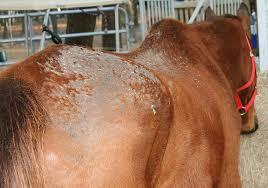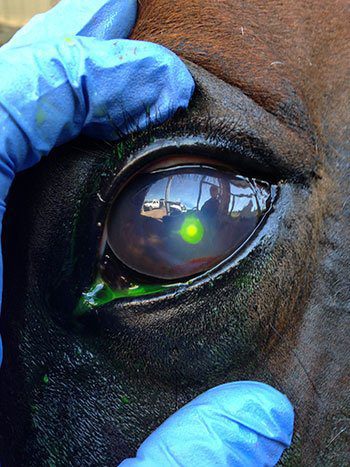 During Summer, warm and damp conditions create the ideal environment for common and frustrating skin infections, like rain scald. In this article, we outline what you need to know about rain scald, including its treatment and prevention.
During Summer, warm and damp conditions create the ideal environment for common and frustrating skin infections, like rain scald. In this article, we outline what you need to know about rain scald, including its treatment and prevention.
What is rain scald?
Rain scald, also called rain rot or streptothricosis, is caused by the organism dermatophilus condolensis that multiplies in hot and humid conditions. Sharing equipment between infected horses, combined with poor stable management, allows its spread.
While the condition isn’t life-threatening, a secondary bacterial infection can arise in this type of environment, which may be even more resistant to treatment. Staphylococcus (staph) and streptococcus (strep) are the most common.
Rain scald usually appears on the back and rump, but it may present itself on the back of the fetlock and front of the cannon bone, and around the eyes, ears and muzzle. These large crust-like scabs or small matted tufts of hair aren’t painful, except when they’re removed during treatment.
How do I treat rain scald?
Oxygen will assist in ridding your horse of rain scald. Any heavy coat and scabs that protect the organism from oxygen should be removed. When first removed, the scabs will leave tender, pink skin, so this process must be done slowly and carefully to avoid unnecessary pain to your horse.
Antimicrobial and antibacterial shampoos will help to kill the dermatophilus condolensis organism. During treatment, your horse should be kept in a dry and well-ventilated area, separated from other infected horses and protected from biting insects.
How do I prevent rain scald?
Any equipment that is shared between horses must be rigorously disinfected. Better yet, every horse in your stable should have their own brushes, saddle blankets, rugs and riding gear to prevent cross-contamination between horses.
Correct stable management, including dry footing, good ventilation and general cleanliness will help to prevent rain scald and other similar skin infections. If persistent rainfall is expected in your area, then you may also keep your horse stabled for part of the day to prevent rain scald’s return.



